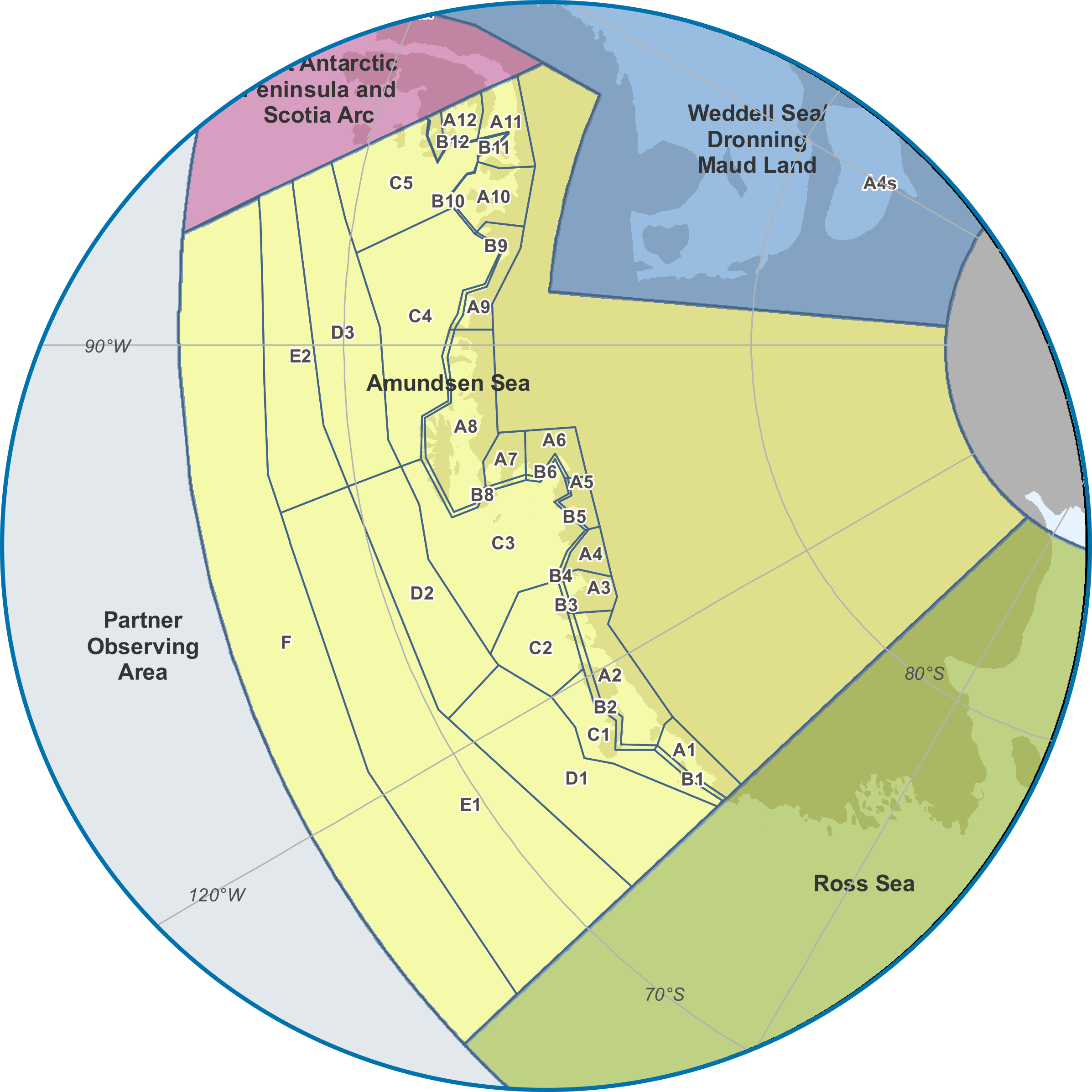Amundsen and Bellingshausen Sector (ABS)
Regional Working Group

The Amundsen and Bellingshausen Sector (ABS) region is dominated by ice-ocean-atmosphere-ecosystem interactions. It experiences high tropospheric variability, increased exposure to the Antarctic Circumpolar Current and warm Circumpolar Deep Water (CDW) intrusions due to melting West Antarctic ice shelves. High biological productivity is found in coastal polynyas experiencing rapid declines in sea ice cover. Both types of ice loss impact ecosystem function, with buoyancy-driven upwelling delivering iron to phytoplankton, and sea ice melt driving shallow mixed layers and relief from light limitation. Ocean observing efforts are therefore focused on CDW and heat transport; meltwater production, fate, and biogeochemistry; primary productivity; carbon fluxes; and sea ice.
The Amundsen and Bellingshausen Sector Regional Working Group will assist delivery of coordinated and, where possible, standardised observations of essential physical, chemical and biological variables in the Amundsen and Bellingshausen Sector in the Southern Ocean in support of SOOS objectives.
The working group is open for involvement to anyone working in the Amundsen and Bellingshausen Sector. Click the button below to receive updates and further relevant information about the SOOS ABS Regional Working Group.

-
Develop and enable regional-scale observing in the Amundsen and Bellingshausen seas using SOOS best practice for observing system.
-
Identify and assemble legacy data sets and sampling techniques of ships and stations in the Amundsen and Bellingshausen sector of the Southern Ocean in order to provide best practice sampling protocols for physical, chemical and biological parameters to enable their standardisation. Sampling approaches and recommendations will be made available on the SOOS Web site.
-
Based on the experience in the the Amundsen and Bellingshausen seas, identify gaps and bottlenecks in the observation systems and contribute to SOOS in addressing these issues. Facilitate co-ordinated and, where possible, multidisciplinary (physical, chemical and biological) observations of the the Amundsen and Bellingshausen sector of the Southern Ocean. Plans, operations and meta-data will be made available on the SOOS web site to help collaboration amongst the international community.
-
Facilitate and, when needed, develop procedures to achieve efficient sharing of data across the science community according to SOOS data policy.
-
Convene focussed sessions at national and international meetings, including SCAR and SCOR, and Facilitate synthesis products, to increase the awareness of the science community to the importance of the Amundsen and Bellingshausen seas.
-
Provide support to International Program Office (IPO) by providing annual reports to be available at the SOOS SSC annual meeting, as well as providing content for the IPO website/newsletters on the activities and outcomes of the Amundsen and Bellingshausen sector working group.
-
Develop a funding plan to sustain the Working Group activities.
-
Have products coming out of the WG acknowledge SOOS.






